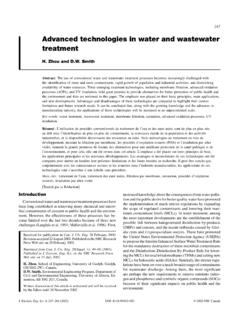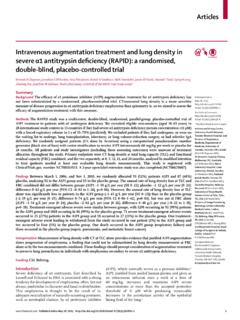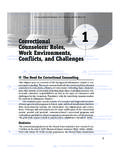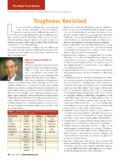Transcription of Guidelines for the Use of Iron Supplements to Prevent and ...
1 Guidelines for the Use of IronSupplements to Prevent and TreatIron deficiency AnemiaRebecca J. StoltzfusMichele L. DreyfussInternational Nutritional anemia Consultative Group(INACG)The use of trade names and commercial sources in this document is for purposes of identifi-cation only, and does not imply endorsement by ILSI. In addition, the views expressed hereinare those of the individual authors and/or their organizations, and do not necessarily reflectthose of PRESSI nternational Life Sciences Institute1126 Sixteenth Street, N. , D. C. 20036-4810 ISBN 1-57881-020-5 Printed in the United States of AmericaTable of vBackground .. 1 Purpose of These Guidelines .. 3 Overview of Interventions for Controlling iron deficiency anemia .. 4 Selecting and Prioritizing 10 Guidelines for iron Supplementation to Prevent iron deficiency 11 Guidelines for Treatment or Referral of Severe anemia inPrimary Care Settings.
2 15 From Guidelines to Programs .. 18 Where to Go for More Help and Information .. 26 Selected 39 PREFACEIron deficiency anemia is the most common micronutrient deficiency in the worldtoday. It impacts the lives of millions of women and children contributing to poorcognitive development, increased maternal mortality and decreased work capac-ity. Yet with appropriate public health action, this form of micronutrient malnu-trition can be brought under control. These Guidelines are offered as an importantcomponent of iron deficiency anemia control International Nutritional anemia Consultative Group (INACG) has a longstanding commitment to provide scientifically sound recommendations to publichealth planners and managers about ways to control iron deficiency anemia . Thispublication is another in a series of publications aimed at providing such the main focus of these Guidelines is on iron supplementation programsand parasite control, these Guidelines acknowledge the beneficial role food fortifi-cation and dietary diversification can have in controlling iron deficiency information on these approaches can be found in other INACG docu-ments as well as those of other is hoped that these Guidelines , which reflect our current state of knowledge, willbe useful to those charged with planning and implementing iron supplementationprograms.
3 Please feel free to send your comments regarding these Guidelines , sothat they might be improved at a future Riggs-PerlaDirectorOffice of Health and Agency for International DevelopmentACKNOWLEDGMENTThe public health community is grateful to Dr. Rebecca Stoltzfus and Ms. MicheleDreyfuss for taking on the important task of developing these Guidelines . Theycommitted numerous hours to drafting and soliciting input from experts aroundthe world. Ms. Rae Galloway contributed significantly to this project by providingher extensive experience on issues discussed in the section, From Guidelines toPrograms including Table 10. Dr. Alan Fleming likewise contributed significantlyto the section, Guidelines for Treatment or Referral of Severe anemia in PrimaryCare Settings. Drs. Lorenzo Savioli and Antonio Montresor provided expert guid-ance on the treatment of parasites, both hookworm and organized an expert panel review of the initial draft Guidelines prepared byDrs.
4 Stoltzfus and Dreyfuss. The members of this panel were: Dr. George Beaton,GHB Consulting, Canada; Dr. Joanne Csete, UNICEF; Dr. Ian Darnton-Hill, OMNIP roject, John Snow, Inc.; Dr. Frances Davidson, Agency for InternationalDevelopment; Dr. Alan F. Fleming, University Teaching Hospital, Zambia; Freire, Pan American Health Organization; Ms. Rae Galloway, MotherCare,John Snow, Inc.; Prof. Tara Gopaldas, Tara Consultancy Services, India; Dr. MahshidLotfi, Micronutrient Initiative; Dr. Sean Lynch, Hampton Veterans Affairs MedicalCenter; Dr. Judith McGuire, The World Bank; Dr. Antonio Montresor, WorldHealth Organization; Dr. Sonya Rabeneck, ACC/Sub-Committee on Nutrition;Dr. Barbara Underwood, National Eye Institute; Dr. Fernando Viteri, University ofCalifornia, Berkeley. The contribution of these experts to the development of thefinal product is greatly is indebted to the for International Development for theircontinued support of activities aimed at controlling iron deficiency anemia indeveloping countries.
5 INACG greatly appreciates the World Health Organization sinterest in cosponsoring this INACGThe purpose of the International Nutritional anemia Consultative Group (INACG)is to guide international activities aimed at reducing nutritional anemia in theworld. INACG offers consultation and guidance to various operating and donoragencies that are seeking to reduce iron deficiency and other nutritionally Prevent -able anemias. As part of this service, INACG has prepared Guidelines and recom-mendations for:nassessing the regional distribution and size of nutritional anemia ,ndeveloping intervention strategies and methodologies to combat iron defi-ciency anemia ,nevaluating the effectiveness of implemented programs on a continuing basisso that evaluation of the effectiveness of intervention techniques is a continu-ing and dynamic process, andnperforming research needed to support the assessment, intervention, andevaluation of is dedicated to reducing the prevalence of iron deficiency and othernutritionally preventable anemias worldwide.
6 In fulfilling this mandate, INACG sponsors scientific reviews and convenes task force groups to analyze issues re-lated to etiology, treatment, and prevention of nutritional anemias. The need toexamine these issues is acknowledged as being important to the establishment ofpublic policy and action programs. A series of monographs and reports are theresult of these task force groups efforts:nGuidelines for the Eradication of iron deficiency anemia (1977)nIron deficiency in Infancy and Childhood (1979; available in English, French,and Spanish)nIron deficiency in Women (1981; available in English, French, and Spanish)nIron deficiency and Work Performance (1983)nDesign and Analysis of iron Supplementation Trials (1984)nMeasurements of iron Status (1985)nGuidelines for the Control of Maternal Nutritional anemia (1989; available inEnglish, French, and Spanish)nCombating iron deficiency anemia Through Food Fortification Technology:An Action Plan (1992.)
7 Available in English, French, and Spanish)nIron EDTA for Food Fortification (1993)nIron Multi-Micronutrient Supplements for Young Children (1997)nChild Development and iron deficiency (1997)nIron EDTA for Food Fortification (Fact Sheet; 1997)Single copies of these reports are available free of charge to developing coun-tries and for $ ( ) to developed countries. Copies are available from theINACG Secretariat:INACG SecretariatILSI Research Foundation1126 Sixteenth Street, NWWashington, DC 20036 (USA)BackgroundIron deficiency is the most common form of malnutrition in the world, affectingmore than 2 billion people globally. iron deficiency anemia (inadequate amount ofred blood cells caused by lack of iron ) is highly prevalent in less-developed coun-tries but also remains a problem in developed countries where other forms ofmalnutrition have already been virtually eliminated.
8 iron deficiency is not the onlycause of anemia , but where anemia is prevalent, iron deficiency is usually the mostcommon cause. The prevalence of anemia , defined by low hemoglobin or hema-tocrit, is commonly used to assess the severity of iron deficiency in a population(Table 1).Table 1. Hemoglobin and hematocrit cutoffs used to defineanemia in people living at sea levelAge or sex groupHemoglobin below:Hematocrit below:g/dL%Children 6 months to 5 5-11 12-13 WHO/UNICEF/UNU, 1997 iron deficiency anemia is most prevalent and severe in young children (6 24months) and women of reproductive age, but is often found in older children andadolescents and may be found in adult men and the elderly. iron deficiency anemiaoccurs when iron stores are exhausted and the supply of iron to the tissues iscompromised.
9 iron deficiency anemia is a severe stage of iron deficiency in whichhemoglobin (or hematocrit) falls below the above cutoffs. iron deficiency anemiais defined as anemia with biochemical evidence of iron deficiency . Serum ferritin,transferrin saturation, transferrin receptor, and erythrocyte protoporphyrin areindicators used as biochemical evidence of iron deficiency generally develops slowly and is not clinically apparent untilanemia is severe even though functional consequences already exist. Where irondeficiency anemia is prevalent, effective control programs may yield benefits tohuman health as shown in Table 2. Benefits of effective control programsPopulation groupBenefitsChildrenn Improved behavioral and cognitive developmentn Where severe anemia is common, improvedchild survivalAdolescentsn Improved cognitive developmentn In girls, better iron stores for later pregnanciesPregnant women andn Decreased low birth weight and perinatal mortalitytheir infantsn Where severe anemia is common, decreased maternalmortality and obstetrical complicationsAll individualsn Improved fitness and work capacityn Improved cognitionPurpose of These GuidelinesThese Guidelines address the appropriate uses of iron Supplements to Prevent andtreat iron deficiency anemia in the context of public health programs.
10 The specificpurposes of this document are:nto provide clear and simple recommendations for people planning to use ironsupplements in anemia control programs at the local, district, or nationallevels;nto address both the prevention of iron deficiency anemia and the treatment ofsevere anemia in public health contexts; andnto integrate recommendations for the use of antimalarial and anthelminthicmedications where appropriate along with iron Supplements to Prevent ortreat is important to remember that these are Guidelines , not rules. Any docu-ment written outside the context of a real program can only serve as a startingpoint for program planners, who are responsible for creatively adapting generalguidelines to their particular social, political, and epidemiological situation. Asmuch as possible, these Guidelines draw on previous INACG and WHO docu-ments as well as recommendations made by other expert of Interventions forControlling iron DeficiencyAnemiaIron Supplements in ContextA varied array of interventions exist that are designed to Prevent and correct irondeficiency anemia .















